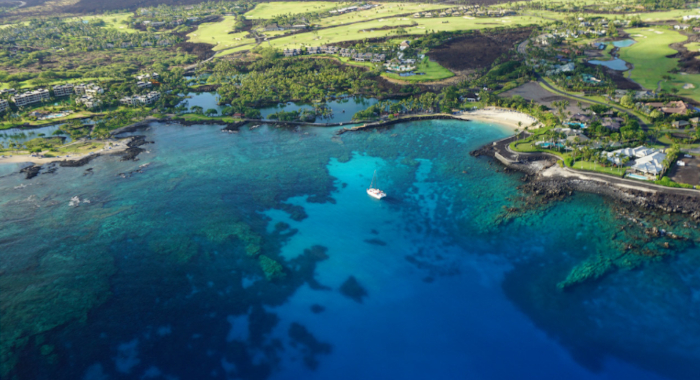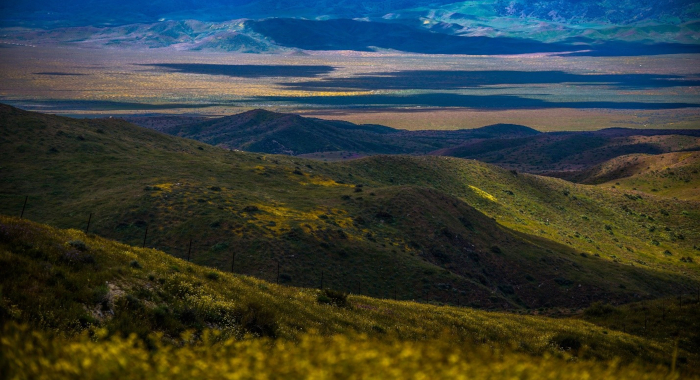There are many and increasing threats to biodiversity. To protect the plants and animals that share our world, we need to understand what they need to survive – and ideally, thrive – in a warming, more crowded world. And we need to better understand how meeting those needs can align with other societal values.
To do that, our scientists conduct ecological research to elucidate conservation problems, test hypotheses and solutions, and monitor results. We collaborate with the scientific community to inform and review our work, and share our findings with scientists and conservation practitioners around the world.


The Conservancy’s Omniscape tool provides a connectivity roadmap for plants and animals that need to adapt as the climate warms.
Alexander C.A.D., F. Poulsen, D.C.E. Robinson, B.O. Ma , R.A. Luster
Management of the Sacramento River and Sacramento–San Joaquin Delta is one of California’s greatest challenges, requiring trade-offs between valued components that serve a multiplicity of…Jono R. Wilson, Serena Lomonico, Darcy Bradley, Leila Sievanen, Tom Dempsey, Michael Bell, Skyli McAfee, Christopher Costello, Cody Szuwalski, Huff McGonigal, Sean Fitzgerald, Mary Gleason
Climate change is amplifying threats to ocean ecosystems and marine fisheries worldwide. In order to respond appropriately in the face of these ocean changes, commercial and recreational…Seth P. D. Riley, Trish Smith, T. Winston Vickers
Freeways are barriers to wildlife passage and gene exchange. In Southern California, mountain lion movement has been severely restricted due to this infrastructure. As a result, the mountain…Aburto-Oropeza, O., M. Edwards, S. Butterfield, and 93 additional authors
The U.S. and Mexico face many shared ecological changes due to the increased frequency and severity of droughts and rising energy demands; trends that entail economic costs for both nations and…Parker, S.S., B.V. Brown, B.S. Cohen, N.S. Fraga, J.J. Knapp, Z. Principe, J. Moore, G.B. Pauly, J.M. Randall, T.A. Wake
A bioblitz is a collaborative, rapid field assessment that takes place in a given location over a short period of time. This paper discusses how bioblitz events involving experts are being used to…Wilson J. , McGonigal, H., Dempsey, T., Gleason, M., Rienecke, S.
Fisheries management in California is a complex, resource intensive process that is limited by funding and staff capacity. In this report, Conservancy scientists and colleagues identify ways in which…Rohde, M.M., S. Matsumoto, J. Howard, S. Liu, L. Riege, E.J. Remson
California's Sustainable Groundwater Management Act (SGMA) of 2014 is landmark legislation that empowers local agencies, known as groundwater sustainability agencies, to sustainably manage…Justine E. Hausheer, Mark D. Reynolds, Greg Golet
Gregory H. Golet, Candace Low, Simon Avery, Katie Andrews, Christopher J. McColl, Rheyna Laney, Mark D. Reynolds
Migratory birds face great challenges due to the climate change, conversion of historical stopover sites, and other factors. To help address these challenges, the Conservancy launched a dynamic…Parker, S.S., B.S. Cohen, N. Fraga, B. Brown, J. Cole, W. Chatfield-Taylor, K. Guadalupe, G.B. Pauly, D. Cooper, M. Ordeñana
In 2017, The Nature Conservancy co-organized an “Expert BioBlitz” to explore a 26-mile stretch of the Wild and Scenic Amargosa River, located in the heart of the Mojave Desert. The event…Darren W. Mierau, William J. Trush, Gabriel J. Rossi, Jennifer K. Carah, Matthew O. Clifford, Jeanette K. Howard
The California water rights system often dis-incentivizes water management that benefits both nature and people by directing the timing of diversions to the summer when water is the most scarce. It…Julie K H Zimmerman, Daren M. Carlisle, Jason T. May, Kirk R. Klausmeyer, Theodore E. Grantham, Larry R. Brown, Jeanette K. Howard
The importance of the natural flow regime to stream and river health has received growing attention in recent years. Understanding natural flows and patterns of flow alteration is an important first…D. Richard Cameron, David C. Marvin, Jonathan M. Remucal, Michelle C. Passero
Combatting climate change will require using all available tools, especially those that contribute to other societal and economic goals, such as natural resource protection and energy security.…Lawrence D. Ford, H. Scott Butterfield, Pete A. Van Hoorn, Kasey B. Allen, Ethan Inlander, Carrie Schloss, Falk Schuetzenmeister, Miriam Tsalyuk
The Nature Conservancy developed RDMapper, a web-based tool that uses satellite-based productivity estimates, rainfall records, and compliance history to identify easement properties at risk of being…Serena Lomonico, Robert Jones, Torrey Johnson, Sarah Newkirk, Sarah Lummis, Kirk Klausmeyer, John Finger, Terry Sawyer, Richard James
Aquaculture is becoming an increasingly important global food source. With this growth comes urgent, unanswered questions about the interactions of aquaculture operations—both positive and…Carolyn M. Malmstrom, H. Scott Butterfield, Laura Planck, Christopher W. Long, Valerie T. Eviner
Invasive weeds threaten the biodiversity and forage productivity of grasslands worldwide. However, management of these weeds is constrained by the practical difficulty of detecting small-scale…